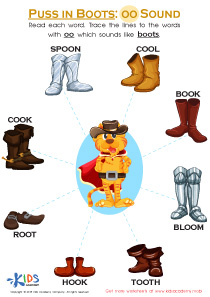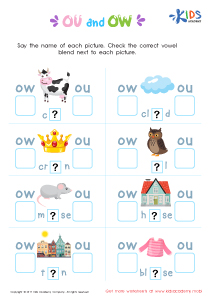Vocabulary expansion Normal Vowel Blends Worksheets for Ages 3-8
7 filtered results
-
From - To
Unlock your child's potential with our engaging Vocabulary Expansion Normal Vowel Blends Worksheets, designed for ages 3-8. These worksheets focus on enhancing vocabulary through the fun and interactive learning of normal vowel blends, helping young learners to recognize and create new words with ease. Each activity promotes essential language skills, fostering confidence and curiosity as children explore language nuances. Perfect for classroom or home use, these user-friendly resources support early literacy development in an enjoyable way. Encourage your little one's love for learning and watch them thrive in their language journey with our thoughtfully curated worksheets!
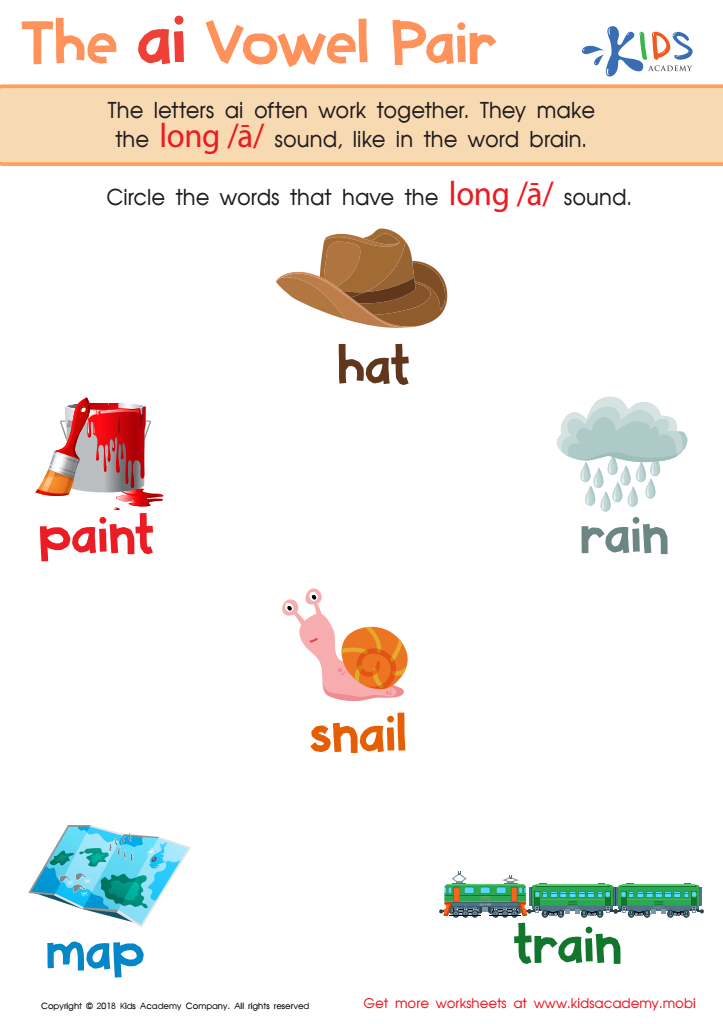

The AI Vowel Pair Worksheet
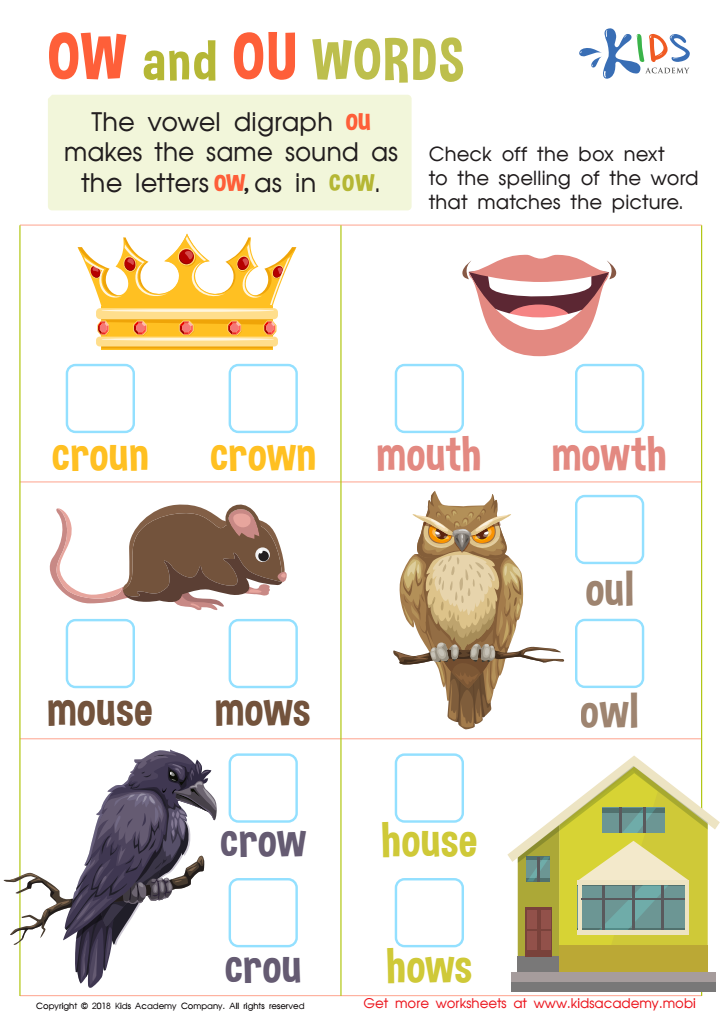

Reading: OW and OU Words Worksheet
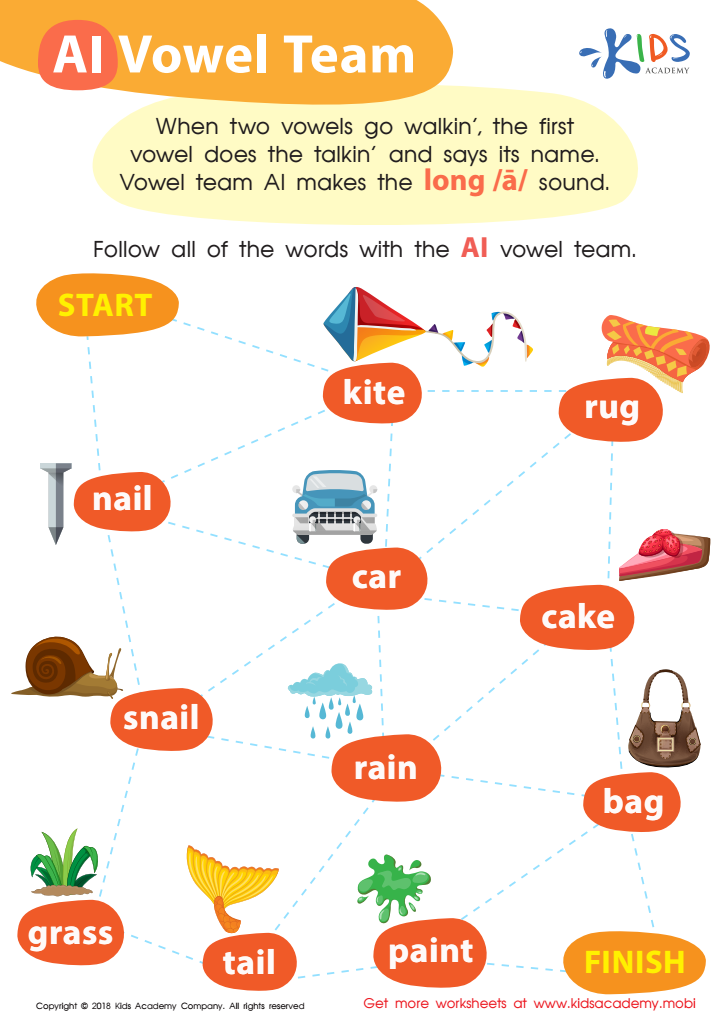

Reading: AI Vowel Team Worksheet
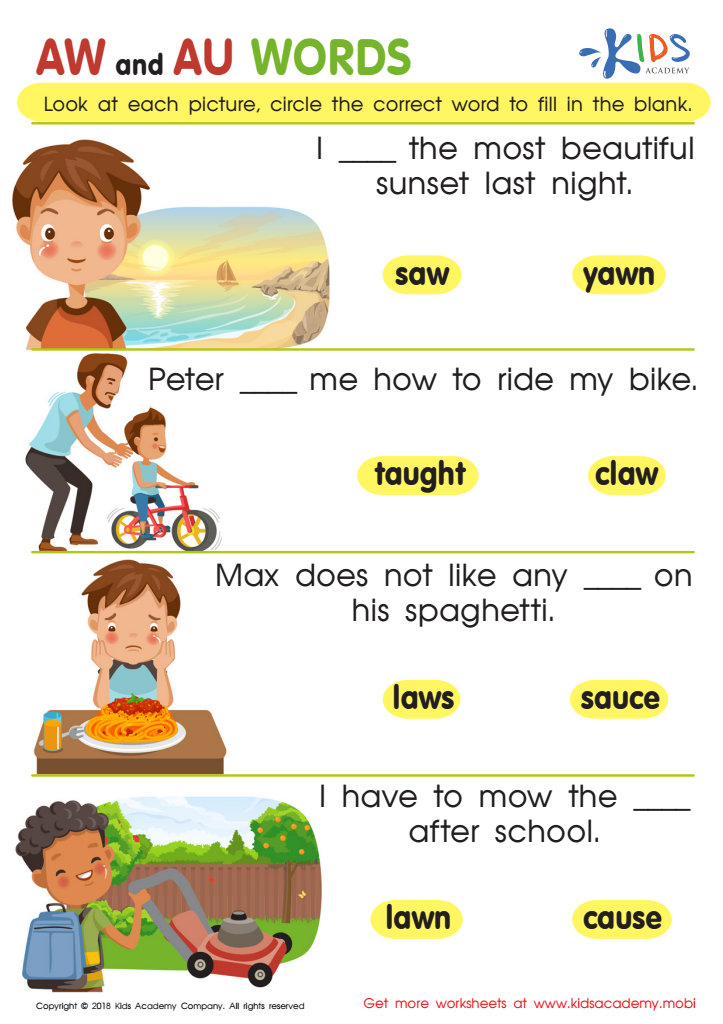

Reading: AW and AU Words Worksheet
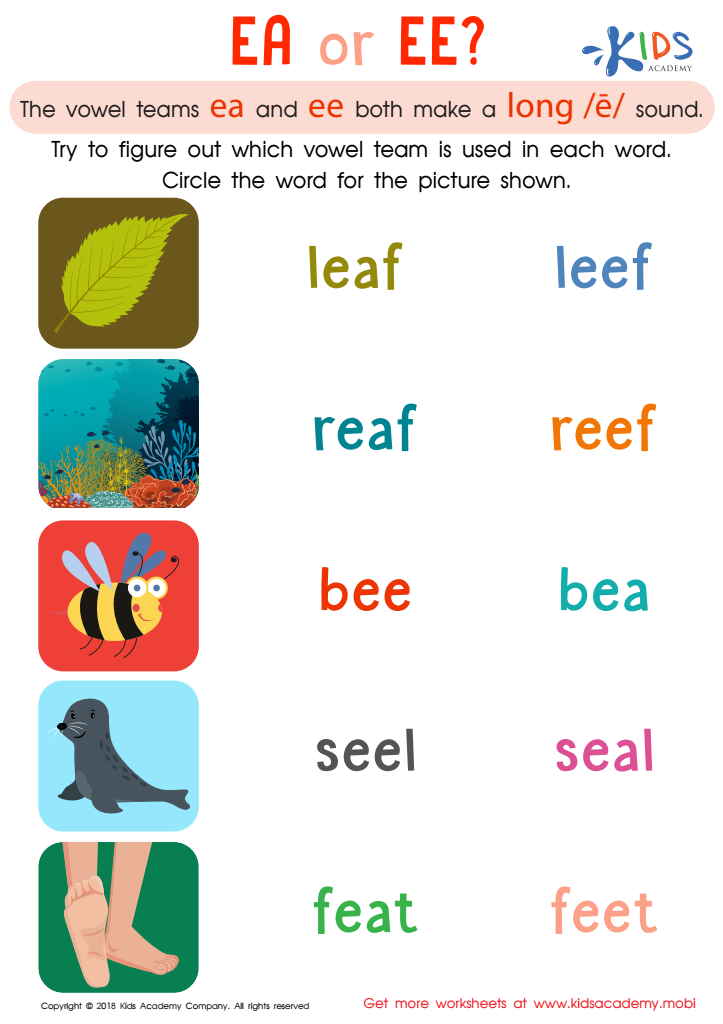

Reading: EA and EE Worksheet
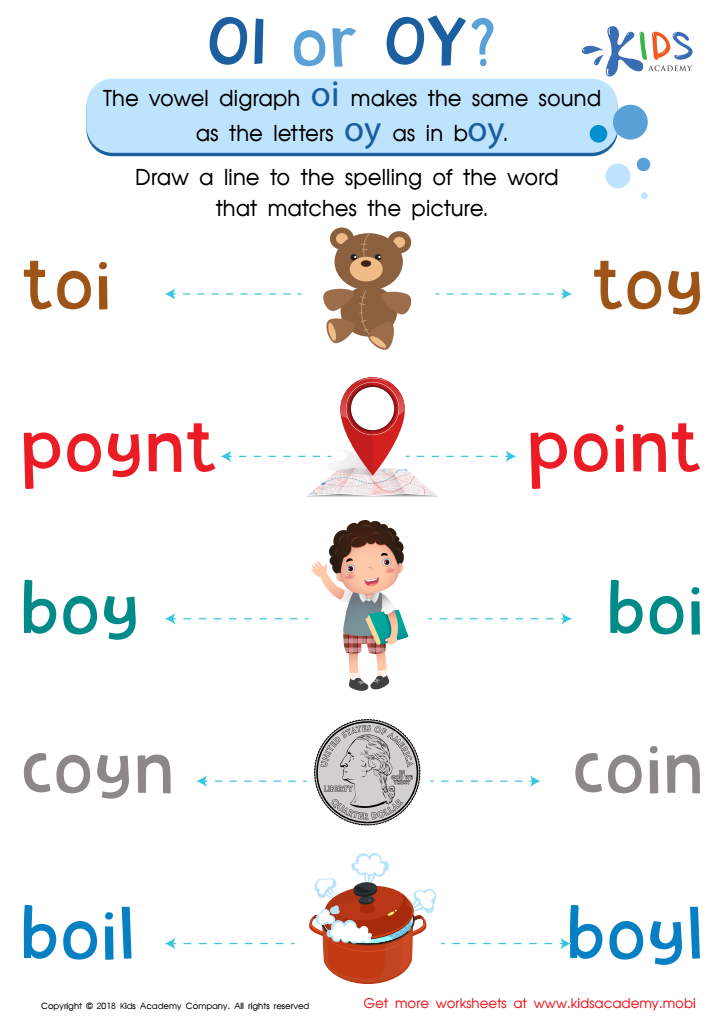

Reading: OI and OY Worksheet


Reading: EA as in Bread Worksheet
Vocabulary expansion, particularly concerning normal vowel blends, is essential for children ages 3-8 as it lays the groundwork for literacy development and effective communication. This age group is critically receptive to language, and incorporating normal vowel blends—such as ‘bl,’ ‘cr,’ and ‘sc’—helps children decode words more easily, enhancing their reading and writing skills.
Teachers and parents play a pivotal role in this developmental phase. Early exposure to these blends broadens a child’s vocabulary, enabling them to express thoughts and ideas clearly. This heightened communication skills can significantly boost a child's confidence both in and out of the classroom.
Additionally, mastery of vowel blends enhances phonemic awareness, a skill crucial for reading fluency. As children become proficient at blending sounds, they are better equipped to tackle new words, fostering a lifelong love of reading and learning.
Ultimately, when parents and teachers prioritize vocabulary expansion through normal vowel blends, they empower children to engage fully with their educational journeys, setting a strong foundation for academic success and social interaction. Encouraging exploration of these language patterns creates enthusiastic learners and effective communicators, essential qualities for navigating the complex world around them.
 Assign to My Students
Assign to My Students








